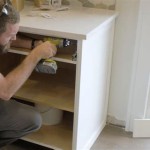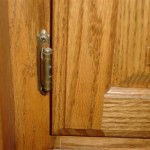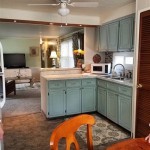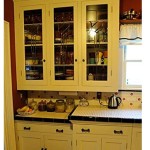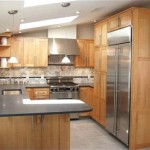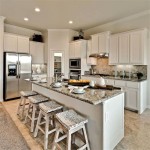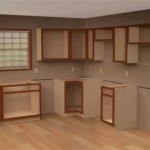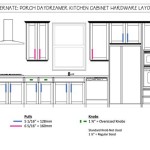What Kind of Paint Do I Need for My Kitchen Cabinets?
Selecting the correct type of paint for kitchen cabinets is crucial for achieving a durable, aesthetically pleasing, and long-lasting finish. Kitchen cabinets are subjected to frequent use, moisture, grease, and temperature fluctuations, demanding a paint that can withstand these challenging conditions. Failure to use the appropriate paint can result in chipping, peeling, and a generally unsatisfactory appearance. Several factors influence the choice of paint, including the cabinet material, the desired sheen, application method, and the level of durability required. This article explores the various paint options available and provides guidance on making an informed decision.
Understanding the Types of Paint
Numerous paint formulations are available, each possessing distinct properties suitable for different applications. For kitchen cabinets, the most commonly used options are oil-based paint, latex paint, and acrylic paint. Alkyd paints are also a consideration, belonging to the oil-based category but offering specific advantages in terms of leveling and hardness.
Oil-Based Paint: Oil-based paints were traditionally favored for their durability, hard finish, and superior leveling properties. Leveling refers to the paint's ability to smooth out brush strokes and create a uniform surface. However, oil-based paints have several drawbacks. They emit high levels of volatile organic compounds (VOCs), which are harmful to human health and the environment. Cleanup requires solvents such as mineral spirits, and the drying time is significantly longer compared to water-based paints. Furthermore, oil-based paints tend to yellow over time, particularly in areas with limited light exposure. Due to these factors, oil-based paints are becoming less popular for residential applications.
Latex Paint: Latex paint, a water-based option, is a popular choice for kitchen cabinets due to its low VOC content, ease of application, and quick drying time. Cleanup is simple, requiring only soap and water. Latex paint offers good color retention and resistance to cracking and peeling. However, traditional latex paints may not be as durable or hard as oil-based paints. Newer formulations of latex paint, often incorporating acrylic resins, have significantly improved durability and are specifically designed for high-use areas like kitchens and bathrooms.
Acrylic Paint: Acrylic paint is another water-based option known for its excellent adhesion, durability, and resistance to moisture. It is formulated with acrylic polymers, which provide a tough, flexible finish that can withstand temperature changes and humidity. Acrylic paint is also resistant to fading and yellowing. While some latex paints contain acrylic resins, 100% acrylic paint offers the highest level of performance. It's a superior choice for cabinets that are prone to moisture exposure or require frequent cleaning.
Alkyd Paint: Alkyd paint bridges the gap between oil-based and water-based paints. It is technically an oil-based paint but has been modified to reduce VOC emissions and improve drying time. Alkyd paints offer excellent leveling properties, creating a smooth, professional-looking finish. They are also durable and resistant to chipping and scratching. Alkyd paints are a good option for those seeking the benefits of oil-based paint without the associated environmental and health concerns.
Choosing the Right Sheen
The sheen of paint refers to the amount of light it reflects. Different sheens offer varying levels of durability, cleanability, and aesthetic appeal. For kitchen cabinets, the most common sheen options are matte, eggshell, satin, semi-gloss, and gloss.
Matte: Matte paint has the lowest sheen, providing a flat, non-reflective finish. While matte paint can hide imperfections well, it is not very durable or easy to clean. It is generally not recommended for kitchen cabinets due to its susceptibility to staining and damage.
Eggshell: Eggshell paint has a slightly higher sheen than matte, offering a subtle, soft finish. It is more durable and easier to clean than matte paint but still not ideal for high-traffic areas like kitchen cabinets. Eggshell paint may show fingerprints and smudges more readily than higher-sheen options.
Satin: Satin paint is a popular choice for kitchen cabinets due to its balance of durability, cleanability, and aesthetic appeal. It has a smooth, velvety finish that is easy to wipe down and resistant to staining. Satin paint provides good color retention and is less likely to show imperfections than higher sheens.
Semi-Gloss: Semi-gloss paint has a higher sheen than satin, offering a more reflective and durable finish. It is very easy to clean and resistant to moisture, making it a good option for kitchens and bathrooms. However, semi-gloss paint can accentuate imperfections in the surface, so proper surface preparation is crucial.
Gloss: Gloss paint has the highest sheen, providing a very shiny and durable finish. It is extremely easy to clean and resistant to staining and moisture. However, gloss paint is highly reflective and can highlight imperfections. It is typically used for trim and accents rather than entire kitchen cabinets.
Generally, satin or semi-gloss are the most suitable sheen choices for kitchen cabinets, offering a balance of durability, cleanability, and aesthetic appeal. The specific choice depends on personal preference and the overall design of the kitchen.
Application Methods and Surface Preparation
The application method and thorough surface preparation play a critical role in the final outcome of the paint job. Regardless of the paint type chosen, proper preparation ensures optimal adhesion and a smooth, even finish.
Surface Preparation: Before applying any paint, the cabinets must be thoroughly cleaned and prepared. This includes removing hardware, such as knobs and pulls, and degreasing the surfaces with a strong cleaner to remove any grease or grime. Sanding is essential to create a smooth, even surface and provide a good "key" for the paint to adhere to. Sanding also helps to remove any existing imperfections, such as scratches or dents. For previously painted cabinets, it may be necessary to remove the old paint entirely before applying a new coat. This can be done with chemical strippers or by sanding. After sanding, the surfaces should be wiped down with a tack cloth to remove any dust particles.
Priming: Priming is a crucial step that should not be skipped. Primer seals the surface, provides a uniform base for the paint, and improves adhesion. It also helps to block stains from bleeding through the paint. Choose a primer that is compatible with the paint being used. For example, use an oil-based primer with oil-based paint and a latex primer with latex paint. Apply the primer in thin, even coats, following the manufacturer's instructions.
Application Techniques: Paint can be applied using a brush, roller, or sprayer. Brushing is the most common method for small-scale projects and allows for precise control over the paint application. However, it can be time-consuming and may leave brush strokes. Rolling is a faster method for covering large surfaces but may not be suitable for intricate details. Spraying provides the smoothest, most professional-looking finish but requires specialized equipment and a well-ventilated area. If using a brush or roller, choose high-quality tools designed for the type of paint being used. Apply the paint in thin, even coats, overlapping each stroke slightly to avoid gaps. Allow each coat to dry completely before applying the next one.
Considerations for Different Cabinet Materials: The type of cabinet material can influence the choice of paint and the preparation required. Wood cabinets are the most common type and can be painted with a variety of paints. Laminate cabinets are more challenging to paint, requiring special primers and paints that are designed to adhere to non-porous surfaces. Metal cabinets should be cleaned and primed with a rust-inhibiting primer before painting.
Ultimately, selecting the right paint for kitchen cabinets involves considering various factors, including durability, ease of application, sheen, and the specific requirements of the cabinet material. Careful planning and preparation are essential for achieving a professional-looking and long-lasting finish.

How To Prep And Paint Kitchen Cabinets Lowe S

Should I Paint My Kitchen Cabinets Helix Painting

What Color Should I Paint My Kitchen Cabinets

How To Paint Kitchen Cabinets In 7 Simple Steps

How To Paint Kitchen Cabinets

How To Paint Kitchen Cabinets In 7 Simple Steps

How Much Time Will It Take To Paint My Kitchen Cabinets Favorite Painters

How To Paint Kitchen Cabinets A Step By Guide Confessions Of Serial Do It Yourselfer

Avoid These Mistakes How To Paint Cabinets That Are Already Painted Grace In My Space

How To Paint Your Kitchen Cabinets The Prairie Homestead
Related Posts

